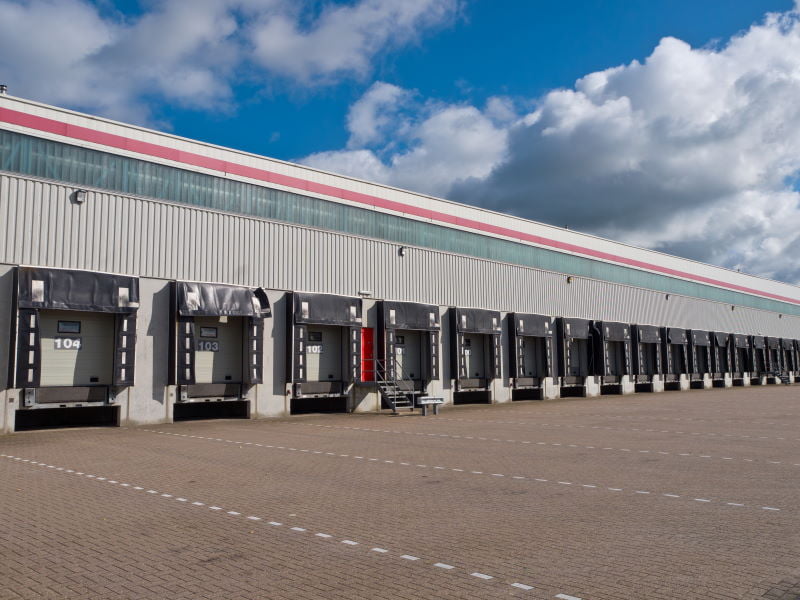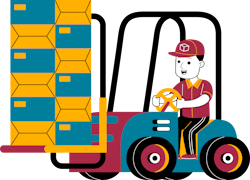Today, we’re going to look at various potential hazards of the loading dock. We’d look for an inspection, uh, dealing with, uh, loading docks. Some typical activities at a loading dock are vehicle traffic coming in and out of the loading dock, parking, stabilizing, immobilizing, pedestrian traffic, and forklift equipment moving in and out of the vehicles to load or unload cargo.
Always Be Alert
Being alert and being familiarized with your environment is very, very important. Being alert is essential for the pedestrian. For the truck driver coming in. Alertness is even more critical for forklift operators who are loading and unloading from the vehicles moving material upon the racking systems.
Communication is an integral part of safety in loading docks. This is true specifically when dealing with the truck driver to ensure that he does not leave or move his vehicle before the completion of loading or unloading. Communication is also vital with forklift operators. Everyone working should know where they are and where they’re going. Communication helps to prevent any collisions with equipment on the floor.
Drivers Should Be Familiar With Hazards
When approaching a loading dock, the truck driver should be familiarized with any hazards associated with the parking area where they’re going to be bringing their vehicles. Light standards, gates, pedestrians, and traffic are all things the truck driver should be aware of. When backing up, the truck driver should ensure that they have a clear sight of the loading dock to interfere with other vehicles, equipment, or pedestrians.
There are various methods to secure a truck at the loading dock properly. One effective method is a dock lock system. You can also use simple wheel chocks, which will prevent any movement of the vehicle. Landing gears are also effective if the power unit is being taken away. Trailer stands can even help support the truck and prevent side to side or back and forth motion.
The truck is supposed to sit or be during the unloading is a matter of policy and procedure. Warehouse managers need to ensure that the vehicle cannot move or leave before completing the loading and unloading.
Keep A Clean Workplace
It’s imperative to keep your work area clean and uncluttered for various reasons. One such reason is to prevent slip trips and falls. If you have snow or ice, especially in winter, that can create a hazard. People can fall and hurt themselves. They may break a leg or even become fatally injured from a fall. If a workplace is kept adequately cleaned and organized, forklifts can move freely. Forklift drivers will not have to dodge obstacles that increase productivity.
It’s crucial to keep maintenance records and inspections for lifting devices to ensure they are adequately maintained. Managers should also keep maintenance records for the dock leveler and dock lock.
Ensure Proper Employee Training
All workers expected to use the equipment must appropriately be trained on that equipment. Warehouse managers should keep all training records for workers in the workplace for review.
Employers should have adequately maintained ventilation systems where filters are checked regularly as per manufacturer specifications. Carbon monoxide detectors are a must and should be installed in workplaces to ensure an alarm will sound in the case of high carbon monoxide levels.
Injuries Are Preventable
Regarding loading docks, employers are responsible for ensuring that all staff receives the proper instructions, information, and supervision to maintain a safe work environment for themselves and all workers. This type of environment with loading docks and all the equipment movement can easily result in a critical or even fatal injury. Workplace injuries are preventable.


